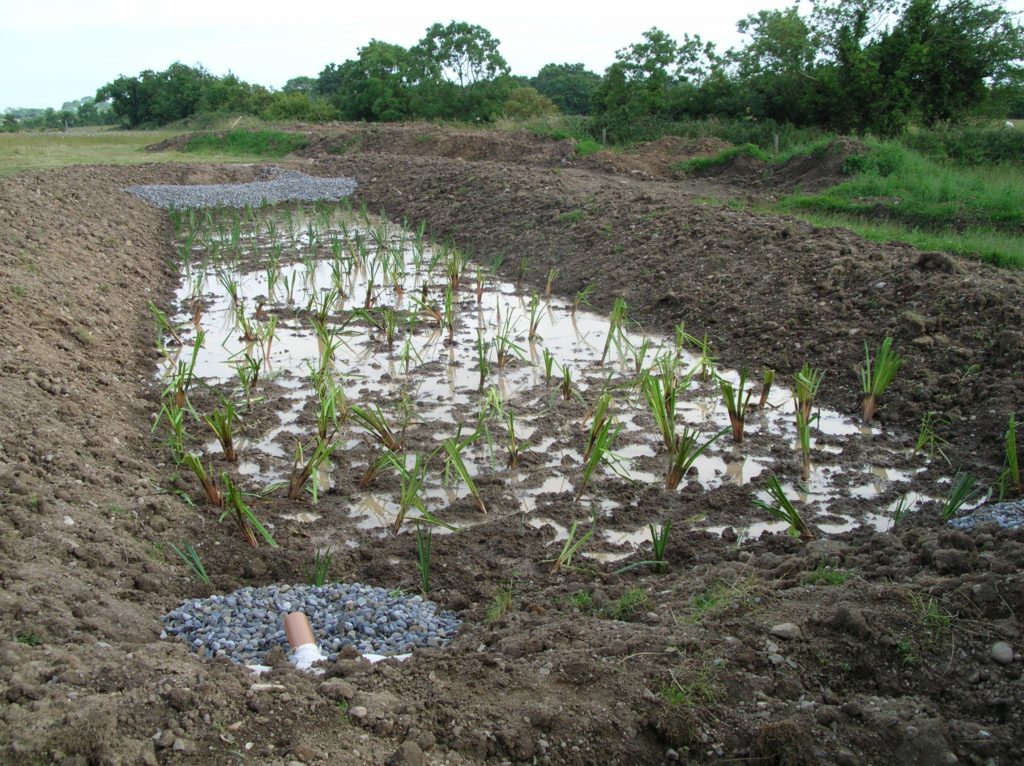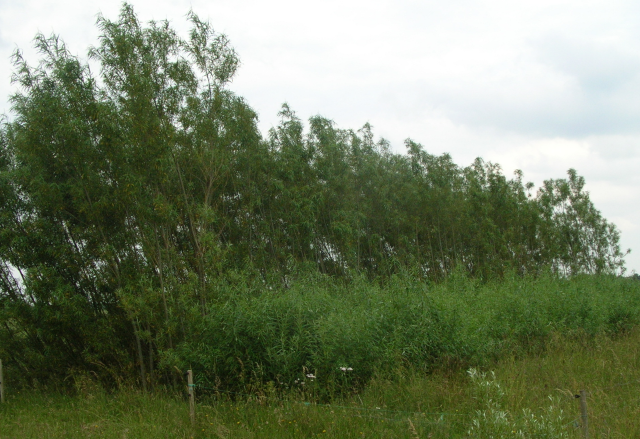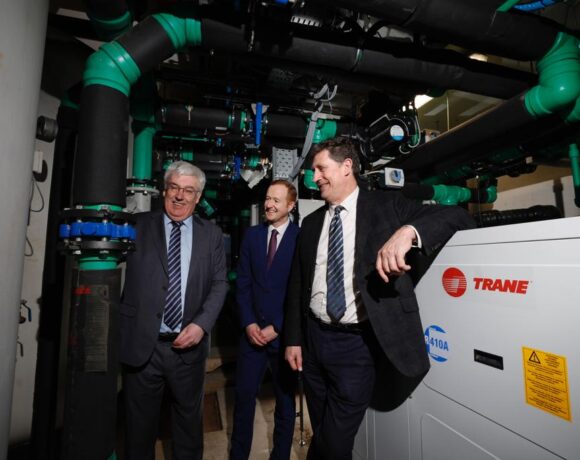By Féidhlim Harty
The recent international conference on natural and constructed wetlands in NUI-Galway hosted experts from across Ireland and elsewhere in Europe; and as far afield as Australia, Asia and North and South America. The conference was the first of its kind in Ireland to bring together speakers from natural wetland and peatland research as well as from the growing environmental engineering field of constructed wetlands and reed beds for wastewater treatment and water quality protection.
We are lucky here in Ireland to have a rich diversity of natural wetlands. Raised and blanket bogs, fens, wet grasslands, rivers, lakes and estuaries all fall into the broad category of wetlands. Wetlands offer great biodiversity value, as well as a host of other ecosystem services ranging from flood control to water quality protection, to tourism and amenity value. Julie Fossitt from the National Parks and Wildlife Service outlined in her paper that in terms of wetland protection, there is a broad range of legal instruments in place, but the practical situation on the ground still leaves much to be desired – as James Owens of NUI Galway described in his presentation on restoration of species richness in the Shannon Callows, the corncrake is now extinct from region.
The situation for wetlands is far from doom and gloom however. Much research work has been done on stabilisation of cutaway peatlands to encourage regeneration of wetland plants and to make habitats for wading birds such as curlew and lapwing, as outlined by David Fallon of Bord na Móna. Remedial works include damming of drains to encourage flooding of large areas with relatively modest financial input, and re-contouring of the steep cutaway edge of the bog to introduce gentle slopes. This re-contouring allows chicks to move from nesting sites into the safer deeper feeding grounds. Removal of regenerating scrub and trees protects nest sites from attack by magpies and hooded crows by removing their look-out perches. These are all straightforward but important measures, backed up by ongoing research into what works and what doesn’t.
The Irish Ramsar Committee was represented in a presentation by James King of Inland Fisheries Ireland. At the end of the first day of the conference the Committee hosted an “aquatics speed dating” event which gave participants an opportunity to explore a range of wetland conservation issues in a fast paced atmosphere. This was a particularly enjoyable event in that it provided for somewhat more lively discussions given the tight time constraints for each question raised. The Ramsar Convention is the oldest modern inter-governmental environmental treaty, devoted to wetland protection and conservation.

Turloughs, seasonal groundwater fed lakes in limestone areas, are a uniquely Irish habitat. Owen Naughton of NUI Galway outlined how new research is making flood modelling easier in these areas following interdisciplinary work between botany and hydrology. By correlating plant species distribution with rainfall data it is now possible to gain quicker and easier insights into turlough water level patterns and the risks posed by flooding. Climate change has been having a direct impact on flood patterns around Ireland and around the world, so this new work helps areas around turloughs to plan for the future.
Moving on from natural wetlands; constructed wetlands were a widely discussed topic. Constructed wetlands are purpose-built systems, most commonly used in Ireland and around the world as wastewater treatment systems. Here in Ireland we have a great diversity of treatment wetland types. These include horizontal and vertical flow reed beds, soil based constructed wetlands and integrated constructed wetland systems that expressly examine biodiversity and landscape-fit as part of the design protocol. The keynote speakers at the conference were Jan Vymazal from the Czech University of Life Sciences in Prague and Rory Harrington from VESI Environmental, who stepped in at short notice to take the place of Matthijs Schouten, who in the 1970s set up the Dutch Foundation for the Conservation of Irish Bogs, and was unable to be present. Both addresses gave a fascinating insight into the use of constructed wetlands as highly effective, biodiverse, low-carbon or carbon sequestering technology for use in effluent treatment and water quality protection.

These and other Irish and international speakers at the conference brought a wealth of accumulated treatment wetland experience from their work and research. The effectiveness of wetlands as a wastewater treatment system was highlighted in example after example from around the globe. Applications range from domestic septic tank effluent, food processing wastewater, landfill leachate, industrial effluents and motorway runoff, to urban storm water and storm sewer overflow.
Scott Wallace of Naturally Wallace in the US described new developments in treatment wetlands. These include pump aerated gravel reed beds, P-removal amendments, sludge drying reed beds and so called “full-treatment filters” which receive effluent without primary settling in a septic tank beforehand. These are now relatively commonly used to good effect in France. The aerated reed beds are currently being used in the new Heathrow airport system for highly enriched runway runoff water. These combine mechanical aeration with the plant and microbial functions of standard horizontal flow reed beds. Closer to home, sludge drying reed beds have recently been used by Carlow County Council at the new Hacketstown sewage treatment system.
Constructed treatment wetlands have the potential to offer wildlife habitat value as well as wastewater treatment functions, as described by Collette Mulkeen in her presentation on the habitat potential for smooth newts. Speaking about Integrated Constructed Wetlands, Rory Harrington outlined that in order to maximise treatment effectiveness and habitat value the wetland system should be sized large enough to remove a broad range of parameters. Constructed wetlands and reed beds have been traditionally sized to address suspended solids and organic matter, but in many recent designs, particularly for ICW systems, they have been increased in size to deal effectively with nitrogen and phosphorus in wastewaters. Many other pollutants such as heavy metals, phenols and other toxins are also filtered out in the process, which is a distinct bonus for the receiving surface water habitat or for underlying groundwaters.
Willow facilities were also explored in a number of papers. In these systems, hybrid willow cultivars evapotranspire some or all of the septic tank effluent into the air. Laurence Gill of Trinity College, Dublin, outlined how the systems tested in their research overflowed so, unlike Danish systems, 100% uptake was not achieved. However, the quality of the runoff was essentially the same as rainfall runoff from willow systems that had not been connected to the sewers, so adjacent watercourses were still protected from pollution. Willow facilities are one of the systems recently highlighted in the TCD EPA Research Report examining solutions for sites of low permeability. With septic tanks increasingly under scrutiny in Ireland, willows have the potential to offer many benefits from cleaner waterways to carbon sequestration (and free firewood). Their habitat value was explored by Conor Owens from TCD, whose preliminary findings suggest that willow facilities can offer biodiversity benefits along with other ecosystem services.
The event was organised by Mike Gormley, Mark Healy and Collette Mulkeen of NUI Galway. All in all the two days offered much of interest to researchers, consultants and designers involved in wetlands in any way, helped in no small part by the beautiful setting on the banks of the River Corrib. Hopefully it will be the first of many such events to promote and expand upon our wetland heritage in Ireland.

Féidhlim Harty
FH Wetland Systems
www.wetlandsystems.ie













